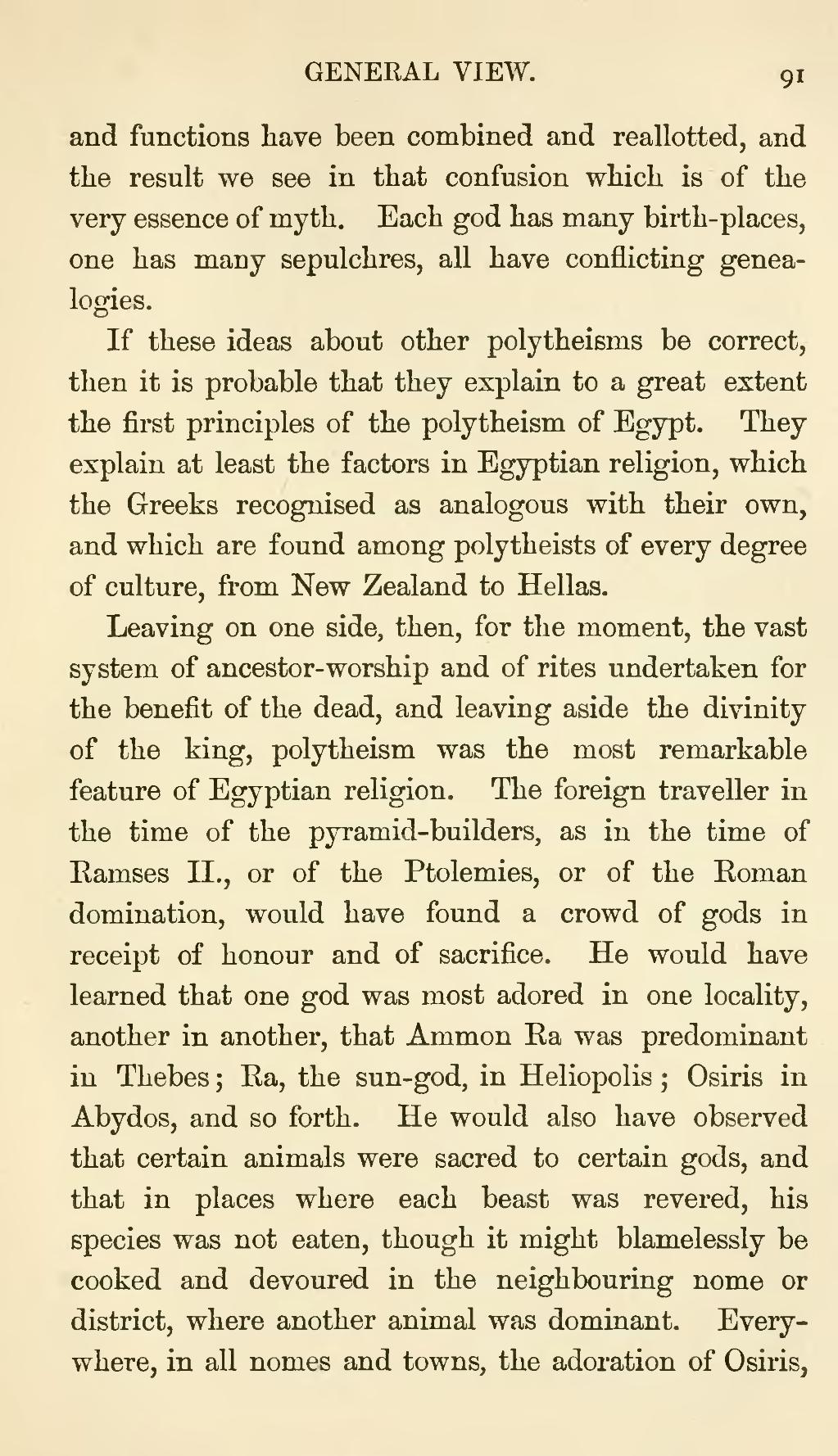and functions have been combined and reallotted, and the result we see in that confusion which is of the very essence of myth. Each god has many birth-places, one has many sepulchres, all have conflicting genealogies.
If these ideas about other polytheisms be correct, then it is probable that they explain to a great extent the first principles of the polytheism of Egypt. They explain at least the factors in Egyptian religion, which the Greeks recognised as analogous with their own, and which are found among polytheists of every degree of culture, from New Zealand to Hellas.
Leaving on one side, then, for the moment, the vast system of ancestor-worship and of rites undertaken for the benefit of the dead, and leaving aside the divinity of the king, polytheism was the most remarkable feature of Egyptian religion. The foreign traveller in the time of the pyramid-builders, as in the time of Ramses II., or of the Ptolemies, or of the Roman domination, would have found a crowd of gods in receipt of honour and of sacrifice. He would have learned that one god was most adored in one locality, another in another, that Ammon Ra was predominant in Thebes; Ra, the sun-god, in Heliopolis; Osiris in Abydos, and so forth. He would also have observed that certain animals were sacred to certain gods, and that in places where each beast was revered, his species was not eaten, though it might blamelessly be cooked and devoured in the neighbouring nome or district, where another animal was dominant. Everywhere, in all nomes and towns, the adoration of Osiris,
